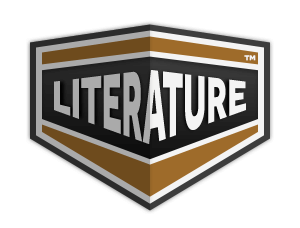The natives of British Central Africa
- 47 Downloads
the Chilwa plain and the valley of the Tuchila, which runs into the Ruo. West of the Shiré we have the Kirk Mountains, running north and south, with some striking peaks—Dzonze, a collection of rounded humps; Mvai, a rocky pyramid, with a three-cleft peak; Lipepete; and, far to the north, Chirobwe, with a sharp rock pointing from its summit like a finger. These mountains are mostly granite and quartzite. West of the lake and the Shiré, there are outcrops of sandstone, and this part of the country also contains coal. Iron ore is abundant almost everywhere, especially the form called hæmatite—a soft, red stone, known to the natives as ng’ama or kundwe, and used by them as paint, and as medicine; lumps of this can be picked up in the beds of all the mountain streams. Graphite, or black lead, is found in the same way, and is used by the women for colouring their pottery, to which it gives an effect exactly like stove-polish. I think these are the only minerals of which they themselves take much account. Gold exists in the quartz in some places, and Sir Harry Johnston says: ‘In the valleys of the rivers flowing south to the Zambezi (in Mpezeni’s country), gold really does exist, and was worked at Misale by the half-caste Portuguese,’ in the eighteenth century, and even later. But the Mang’anja and Yaos only know it through their dealings with Portuguese and Arabs, and have no word for it in their languages. Ndalama, which, with the addition of ‘red,’ means gold, and of ‘white,’ silver, and by itself = ‘money,’ is, I fancy, a borrowed word—the Arabic dirhem. I once bought (in the West Shiré district) a bangle of pure copper, which was vaguely said to have been obtained from a place to the north-west, but where it had been worked, I could not ascertain. The brass which is fashioned by native craftsmen is always bought from traders. There are no deserts in this part, neither are there any dense forests of huge trees, such as we usually think of when Central Africa is mentioned, and such as are really to be found in the Upper Congo basin, on the Gold Coast, and elsewhere. Two Yao boys, who had served in Ashanti with the King’s African Rifles, spoke of the West African forest with the same sort of surprise and wonder as any English rustic might have done. Both, independently, answered the question, ‘What is that country like?’ with the same expression—‘Palibe kuona, one cannot see!’ adding that the trees were high—very high (with an upward gesture of hands and eyes)—away up above one’s head. Large trees, growing close together, are just what one does not find, as a rule, in the country we are thinking of. The Bush (tengo, or chire) usually consists of small trees, thinly scattered, with tufts of grass, small bushes, and various herbaceous plants growing between them, and here and there a large tree standing by itself—perhaps
Translation
Translate and read this book in other languages:
Select another language:
- - Select -
- 简体中文 (Chinese - Simplified)
- 繁體中文 (Chinese - Traditional)
- Español (Spanish)
- Esperanto (Esperanto)
- 日本語 (Japanese)
- Português (Portuguese)
- Deutsch (German)
- العربية (Arabic)
- Français (French)
- Русский (Russian)
- ಕನ್ನಡ (Kannada)
- 한국어 (Korean)
- עברית (Hebrew)
- Gaeilge (Irish)
- Українська (Ukrainian)
- اردو (Urdu)
- Magyar (Hungarian)
- मानक हिन्दी (Hindi)
- Indonesia (Indonesian)
- Italiano (Italian)
- தமிழ் (Tamil)
- Türkçe (Turkish)
- తెలుగు (Telugu)
- ภาษาไทย (Thai)
- Tiếng Việt (Vietnamese)
- Čeština (Czech)
- Polski (Polish)
- Bahasa Indonesia (Indonesian)
- Românește (Romanian)
- Nederlands (Dutch)
- Ελληνικά (Greek)
- Latinum (Latin)
- Svenska (Swedish)
- Dansk (Danish)
- Suomi (Finnish)
- فارسی (Persian)
- ייִדיש (Yiddish)
- հայերեն (Armenian)
- Norsk (Norwegian)
- English (English)
Citation
Use the citation below to add this book to your bibliography:
Style:MLAChicagoAPA
"The natives of British Central Africa Books." Literature.com. STANDS4 LLC, 2024. Web. 22 Oct. 2024. <https://www.literature.com/book/the_natives_of_british_central_africa_71018>.

